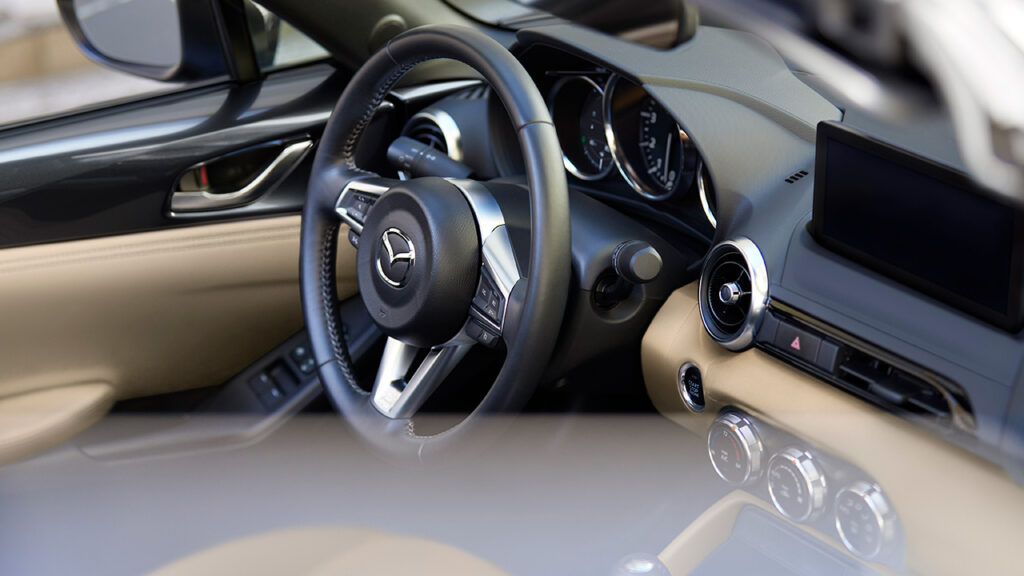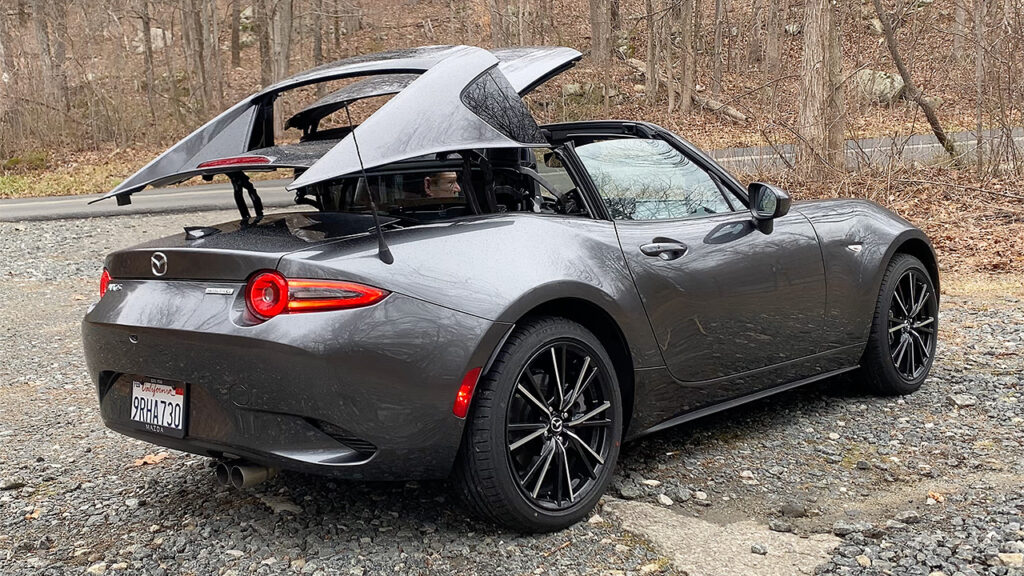The Mazda MX-5 Miata Is Zoom-Zooming Along as It Reaches a Milestone
The iconic sports car turns 35 years old.

The more things change, the more the Mazda MX-5 Miata stays the same. The iconic sports car is celebrating its 35th anniversary this year and remains very true to the original’s small, simple, and affordable ethos.
Even the current fourth-generation model has been on sale for nearly a decade without any major updates, which makes it one of the “oldest” new cars on sale today.
The MX-5 Miata exists in a bubble. There is nothing else like the $30,715 two-seat convertible. Its closest competitor is the Toyota GR86, but that is a foot longer and has rear seats and a hardtop.
You can get the MX-5 Miata with a hardtop, too, but it opens. The MX-5 Miata RF (Retractable Fastback) that I recently drove is essentially the convertible chassis equipped with a roof mechanism that transforms it into a targa-top car.
The process is entertaining to watch. The rear section of the roof is lifted on mechanical arms and then the rear window and panel from above the passengers fold and tuck into the storage space below it. The complexity seems to go against the MX-5 Miata’s grain, but Mazda has been selling the RF since 2017, so it remains a popular choice that starts at $38,735.

Both versions of the MX-5 Miata come with the same 181 horsepower 2.0-liter four-cylinder engine, which drives the rear wheels through a six-speed manual transmission, but a six-speed automatic is optional on some trims.
The trunk has just 4.5 cubic feet of capacity, but it is a useful shape that can swallow two carry-on suitcases. Soft, stuffable duffel bags really are the way to go.
The cabin is intentionally cozy, but not comically small. There is more than adequate headroom for my six-foot, one-inch frame, but another two inches of legroom would be on my wishlist. However, the heated, leather upholstered seats in the aptly named Grand Touring model I tested were all-day comfortable.
The instrument cluster is refreshingly retro with a tachometer front and center and a speedometer to its right — both analog — while a small digital information screen is on the left. There are three knobs on the dash for the climate control and a volume knob on the center console behind a larger knob that is used to control the infotainment system screen. It is a touchscreen when you are using Apple CarPlay or Android Auto, but not with Mazda’s built-in system.
The gear lever is close at hand and next to it is a handbrake, which most cars have given up in favor of buttons controlling electronic brakes. The pedals are perfectly spaced so that you can brake and blip the throttle at the same time in order to make the smoothest downshifts, if you know how to dance on them like that. I only get by, but the car is a good partner if you let it lead.

The MX-5 Miata may be the antithesis of a muscle car, but it is quicker than you might expect. It can sprint to 60 mph in less than six seconds, but prefers curves to straight lines.
A winding road is its element and it is like nothing else on one. The steering is telepathic and you can hear the road as much as you can feel it. Driving this little thing at 55 mph is as thrilling as driving most sports cars at more than 100 mph. There is no surprise that it is still the go-to car for up-and-coming racing drivers. Going for a ride in it after spending the week in an SUV is like walking onto the beach in a Speedo after years of wearing board shorts.
Mazda has sold more than 1.2 million MX-5 Miatas around the world since it went on sale for the 1990 model year, but it delivers less than 10,000 annually in the U.S. these days. That seems about right. It is not for everyone.
It is also not going away. The current car will be on sale for at least another year and will become the longest-serving MX-5 Miata generation. Its head designer recently told Road & Track that the next version may be even smaller and lighter than this one, which will make it even more like the original.
When that first car was introduced for the 1990 model year it was meant to evoke the tiny British sports cars of the early 1960s, so it is odd to think it is older now than they were then and will serve as the template for the next iteration.

